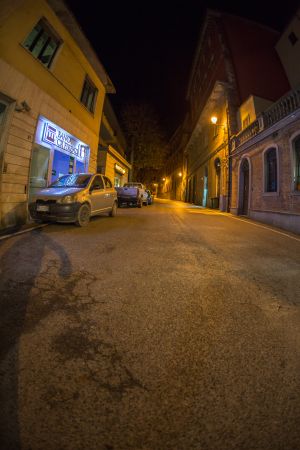Scansano
Scansano is a town and comune, of medieval origin, in the Tuscan province of Grosseto, Italy. The area which Scansano lies within is called Maremma.
Scansano is notable for Morellino di Scansano, a type of wine.
Quelle: Wikipedia
Geography
The municipality covers about 274 km². It lies about 25 km east of Grosseto and 140 km south of Florence in the wine-growing region of the Morellino di Scansano and in the climatic classification of Italian municipalities in zone E, 2216 GG. In the commune, the Albegna rivers (southern, 6 km in the municipal area), Ombrone (4 km) and Trasubbie (4 km) (both in the northern municipal area).
The hamlets of Baccinello, Montorgiali, Murci, Pancole, Poggioferro, Polveraia, Pomonte and Preselle. In the main town live about 1400 inhabitants, the most populated areas are Baccinello and Pancole with about 300 inhabitants each. The highest part is Murci with 595 m.
The neighboring communities are Campagnatico, Grosseto, Magliano in Toscana, Manciano and Roccalbegna.
History
Dokumentiert sind die Ortsteile Murci (918) und Montorgiali (1188 von Papst Clemens III., damaliger Hauptort der Grafschaft[5]) bereits vor dem heutigen Hauptort Scansano, der erst 1272 schriftlich erwähnt wird. Scansano entstand als Burg (Castello, heute nicht mehr vorhanden) auf einer Anhöhe zwischen dem Ombrone-Tal und dem Albegna-Tal im Mittelalter. Bis zum Ende des 13. Jahrhunderts war der Ort unter der Kontrolle der Aldobrandeschi aus Santa Fiora. Ab 1418 unterstand der Ort dem Grafen von Santa Fiora, Bosio Sforza, der den Ort 1615 an Cosimo II. de’ Medici verkaufte und von ihm im Herzogtum Toskana eingegliedert wurde. 1783 gelangten die Ortsteile (außer Murci und Pereta) aufgrund einer Gebietsreform der Maremma zu Scansano. Unter Leopold II. diente der Ort im Sommer als Sitz der Provinzregierung, da Grosseto aufgrund der geografischen Lage Probleme mit der Malaria hatte. Wirtschaftlicher Aufschwung gelang dem Ort ab 1816, als die Produktion von Schwefel begonnen wurde. 1861 hatte der Ort ca. 4350 Einwohner, was sich bis 1951 fast verdoppelte, sich dann allerdings bis in die heutigen Tage wieder auf das Niveau von 1861 senkte.
Attractions
- Villa Sforzesca, also called Fattoria di Pomonte, district Pomonte
- Castello di Cotone, medieval castle about 6 km north of the main town
- Castello di Montepò, medieval castle about 4 km north of the main town
- Chiesa di San Giovanni Battista, a Pieve and a collegiate church in the center of the town dating back to 1628, which was built from the remains of a church already mentioned in 1276 and restored and re-consecrated in 1754. The work Madonna dell'Uccellino of Andrea della Robbia, which was published in 1971, contained a copy of the work of art. In addition, the church has the work of Martirio di San Sebastiano of the Sienese artist Stefano Volpi.
- Chiesa della Madonna delle Grazie, also known as Chiesa della Botte, church just outside the walls, which was built at the beginning of the 17th century. The name refers to the painting in the building of the SS. Vergine, which is also called degli Affrichelli or della Botte in the People's mouth.
- Convento del Petreto, monastery north of the main town, which goes back to Saint Bernard of Siena. Was 1702 Monastery of the Franciscans. After various changes of ownership, the building has been in the hands of the Franciscans since the beginning of the 20th century.
- Teatro Castagnoli, a theater in the center, built between 1852 and 1892.
- Villa Sforzesca, also called Fattoria di Pomonte, Villa of the Sforza from the year 1577 in the district Pomonte.







